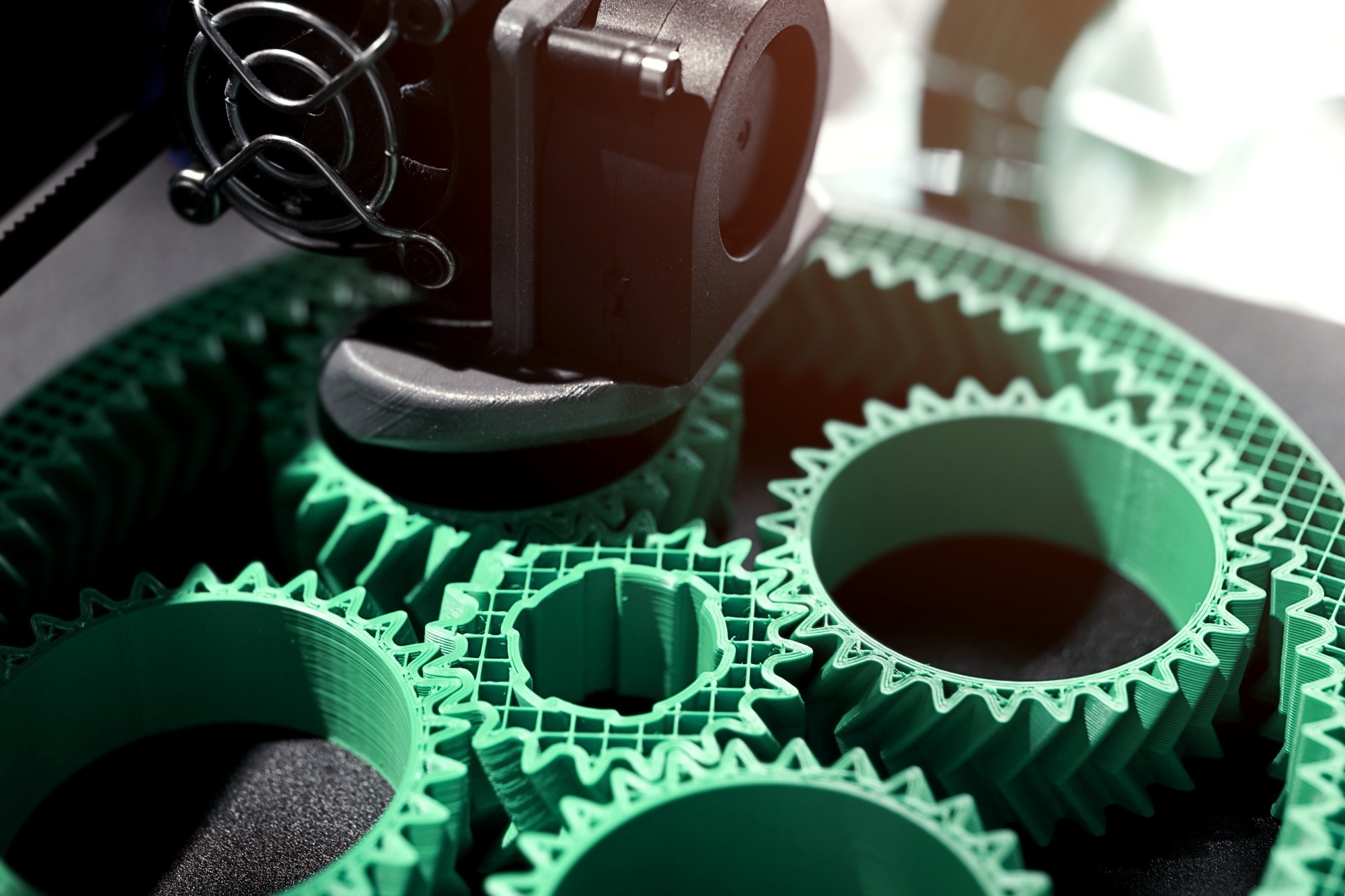A recent review article published in the journal Materials & Design explored how big data, machine learning (ML), and digital twin technologies can improve various aspects of the additive manufacturing (AM) process. It focused on integrating these technologies to enhance the efficiency, accuracy, and sustainability of AM.
 Study: Revolutionizing Additive Manufacturing with AI and Digital Twins. Image Credit: R_Boe/Shutterstock
Study: Revolutionizing Additive Manufacturing with AI and Digital Twins. Image Credit: R_Boe/Shutterstock
Background
AM, also known as three-dimensional (3D) printing, is a technology that creates objects by depositing layers of material on top of each other. It offers significant advantages over traditional manufacturing, including design freedom, reduced material waste, and the ability to produce complex geometries that were previously impractical or impossible. AM has the potential to transform various industries, such as aerospace, automotive, healthcare, food, and construction.
Despite its benefits, AM faces challenges like process instability, quality variations, and material limitations. To address these issues, researchers have recently integrated advanced data-driven techniques such as ML, big data analytics, computer simulations, and digital twin technologies into AM. These technologies enable the collection of real-time data from sensors, machinery, and social media to optimize the AM process for greater efficiency and reliability.
About the Research
In this review, the authors provided a comprehensive overview of the current state of research and development in the intersection of big data analytics, ML, and digital twin-assisted AM. They examined the latest advancements and applications in these areas, highlighting the potential benefits, challenges, and future prospects of integrating these technologies into the AM process.
The researchers emphasized the role of the ML method in various aspects of AM, including design optimization, material analysis, process parameter optimization, defect detection and monitoring, and sustainability. They also reviewed the current status of digital twin-assisted AM, detailing its technical approaches and offering insights into future developments and perspectives.
The study employed a systematic literature review method to collect and analyze relevant papers published in the past decade. Using various databases and specific keywords, the authors searched for papers focusing on the intersection of big data, ML, and digital twins in AM. They applied inclusion and exclusion criteria to filter out irrelevant or low-quality papers. Additionally, they used citation and bibliometric analyses to identify the most influential papers and research trends in this field.
Research Findings
The outcomes showed that big data, ML, and digital twins have significantly advanced AM by enhancing defect detection accuracy, process parameter optimization, design optimization, material analysis, and sustainability. The authors observed that these technologies have collectively improved the quality, efficiency, and sustainability of AM processes, offering new opportunities for complex designs and innovative materials.
They noted that while numerous review papers exist on ML for AM and digital twins for AM, no existing paper has examined how these concepts are interconnected. This paper is the first to integrate these three concepts into a unified framework, showcasing how they can collaboratively improve all aspects of the AM process.
The study also identified several challenges and limitations that hinder the further development and adoption of these technologies in AM. These included issues related to data quality and availability, data security and privacy, computational complexity and cost, model accuracy and generalization, and the need for standardization and interoperability. It also proposed potential solutions and future research directions, such as data fusion and integration, data encryption, and protection, the use of cloud and edge computing, the development of physics-informed ML algorithms and explainable artificial intelligence (AI), and the application of ontology and semantic web technologies.
Applications
ML algorithms significantly enhance AM by optimizing material properties and improving material selection processes, leading to the development of new materials with tailored characteristics. These algorithms also improve control over AM processes, enhancing efficiency and reducing defects. Real-time defect detection through ML enables corrective actions before issues become critical.
Moreover, ML-driven geometric and topology optimization revolutionizes product design and manufacturing, resulting in lighter, stronger, and more efficient designs. Similarly, the integration of ML and digital twin technologies further promotes environmentally friendly practices by modeling energy consumption, reducing waste, and optimizing support structures.
Conclusion
In summary, the review highlighted that big data, ML, and digital twin technologies have the potential to revolutionize the AM industry. Together, these technologies could significantly enhance AM processes and open new avenues for design and material innovation. Moving forward, the researchers underscored the importance of continued research and collaboration among academia, industry, and policymakers to fully utilize the transformative potential of these technologies.